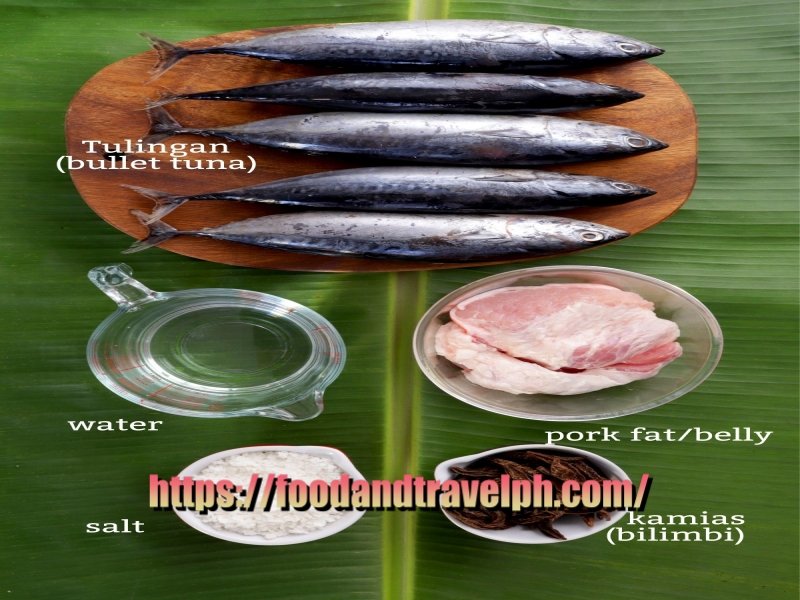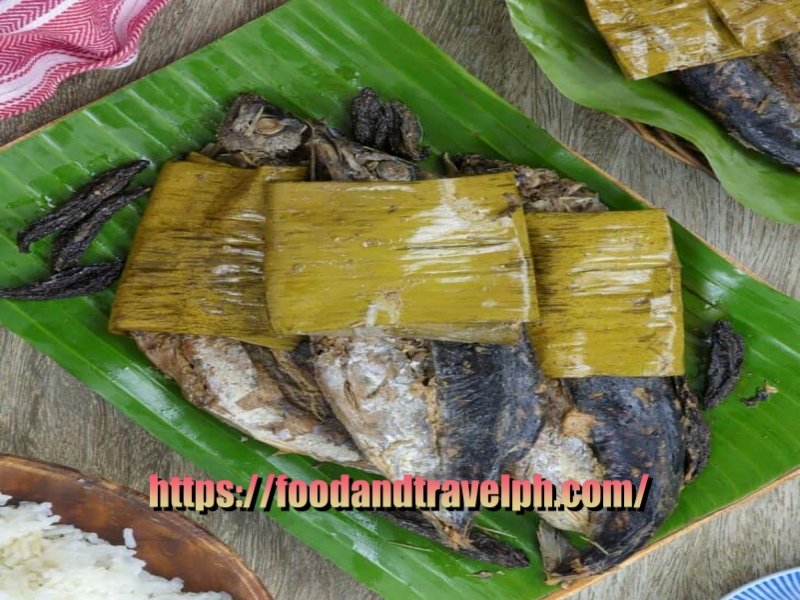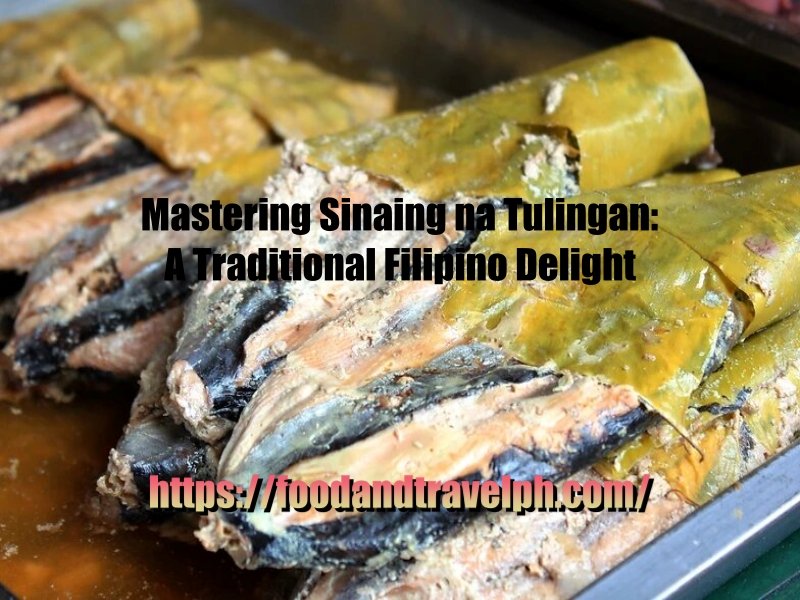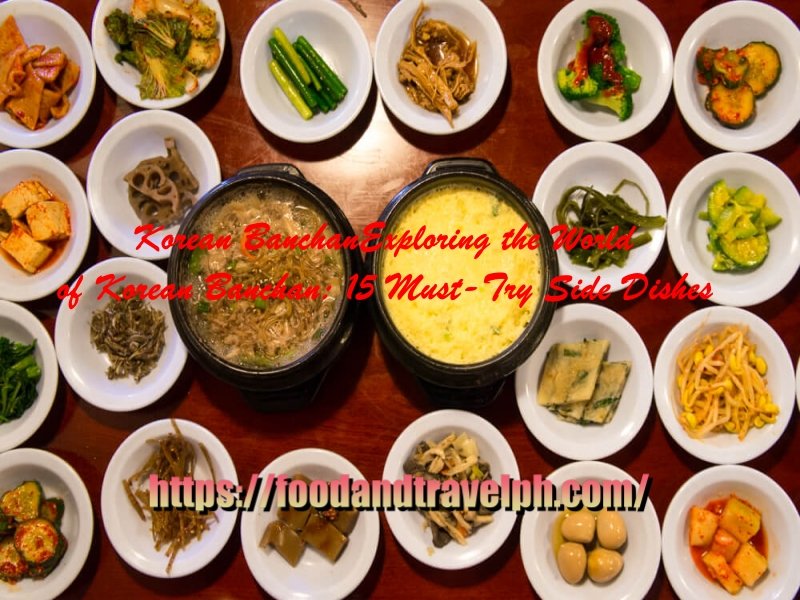Sinaing na Tulingan
Discover the art of cooking Sinaing na Tulingan, a classic Filipino dish that brings the coastal flavors of the Philippines straight to your kitchen. This savory and tangy dish features bullet tuna (tulingan) slow-cooked to perfection with a medley of traditional ingredients. Whether you’re a seasoned cook or a culinary adventurer, our step-by-step guide and reviews will help you recreate this beloved Filipino staple.
Sinaing na Tulingan is a comforting, homey dish that showcases the simplicity and depth of Filipino culinary tradition. The slow-cooking process ensures that the fish is tender and flavorful, with the sour notes from the kamias balancing the richness of any added pork fat. The banana leaves impart a subtle aroma that enhances the overall experience, making this dish a beloved staple in many Filipino households.
Sinaing na Tulingan is a classic Filipino dish that features bullet tuna (tulingan) slow-cooked in water, salt, and sometimes kamias (bilimbi) or other souring agents to achieve a tender, flavorful fish. It’s a traditional recipe from the Southern Tagalog region, particularly popular in Batangas. Here’s a detailed recipe and description for you to try:
Ingredients
- 1kg tulingan (bullet-tuna), cleaned and gutted
- 1/4cup rock salt
- 4-6pieces dried kamias or 10pieces fresh kamias
- 2-3pieces banana leaves
- 2cups water (or enough to cover the fish)
- 250g pork belly or pork fat (optional), sliced

Instructions
1. Preparation of Fish
- Clen the tulingan thoroughly. Remove the gills and guts.
- Rub the fish with rock salt, ensuring the fish well-coated inside and out. Leave it for about 15-20 minutes to absorb the salt.
2. Prepare Kamias
- If usin dried kamias, soak them in a bit of water for about 5-10 minutes to rehydrate.
- If using fresh kamias, simply wash them thoroughly.
3. Layering
- Line the bottom of a deep pot with banana leaves. The banana leaves add a unique aroma and help prevent the fish from sticking to the pot.
- If using pork fat or pork belly slices, place them on the top of the banana leaves. This adds richness to the dish,
4. Assembly the Fish
- Arrange the salted tulingan on the top of banana leaves (add pork, if using).
- Scatter the kamias over the fish.
5. Cooking
- Pour enogh water into the pot to cover the fish.
- Cover the pot and bring to a boil over medium heat.
- Once it starts boiling, reduce the heat to low and let it simmer for about 1-2 hours. The fish should cook slowly to become tender and infused with the flavor of the kamias and seasonings.
6. Final touches
- Check yhe water level occasionally and add more if necessary to ensure the fish remains submerged and cooks evenly.
- Once the fish is tender and the flavors have melded together. Remove the pot from the heat.
Serving
- Serve the sinaing na tulingan with steamed rice.
- You can drizzle some of the flavorful broth over the rice or serve it on the side.
- Optionally, you can garnish with a bit of sliced chili for a touch of heat.

Sinaing na Tulingan is more than just a dish; it’s a taste of Filipino heritage and coastal cuisine. With its rich flavors and simple preparation, it’s perfect for family meals or special occasions. Give it a try and let the flavors of the Philippines enchant your taste buds!
Yukgaejang: The Ultimate Korean Spicy Beef Soup Recipe
How to cook Yukgaejang Yukgaejang is a vibrant and flavorful Korean beef soup known for its rich, sp…
A Guide to Making Delicious Ojingeo-Bokkeum (Spicy stir fried squid)
Ojingeo-Bokkeum (Spicy stir fried squid) Recipe Ojingeo-Bokkeum (Spicy stir fried squid), a fiery an…
Coconut Bliss: The Magic of Adobong Manok sa Gata
Adobong Manok sa Gata Recipe Adobong Manok sa Gata is a Filipino dish that beautifully marries the c…
Savor the Flavors of the Philippines: A Guide to Cooking Chicken Afritada
How to cook Chicken Afritada Chicken Afritada is a popular Filipino dish that features chicken piece…
Deliciously Nutritious: How to Cook Ginisang Munggo
Munggo Recipe Ginisang Munggo is a popular Filipino dish made primarily from mung beans, often enjoy…
Exploring the World of Korean Banchan: 15 Must-Try Side Dishes
How to make Korean Banchan Korean cuisine is renowned for its rich flavors and diverse dishes, and o…










Leave a Reply